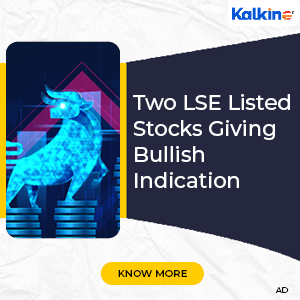Summary
- Holding stocks for longer time durations could help in wealth accumulation
- Reinvesting dividends and exercising rights issues to include more shares is considered beneficial for passive investors
- There is a taxation benefit in holding securities for longer durations and even a small amount of money could turn into wealth accumulation through the power of compounding
Buy and Hold strategy is usually considered by passive investors. People who are looking to accumulate wealth and save for their retirement, child’s education, or to create passive sources of income can consider deploying this strategy.
Passive investors are people who might lack expertise and time to study the market. It is not possible for them to time the market, pay attention to business dynamics and keep track of their investments every now and then. The strategy of “Buy and Hold” is buying stocks, index funds or exchange-traded funds (ETF’s) and holding them for very long-time spanning decades.
Most people recommend Buy Low, Sell High strategy. If you are waiting to buy low, you may have to wait several years to even get into the market. For instance usually, people prefer taking fresh positions during a recession. As for sell High, if you have invested in stocks over a long period of time spanning years and you own these stocks in good quantities, then you might enjoy fat dividend income from it annually or quarterly.
Now the question arises, why to sell even if the market is trading at a record high, you are still getting fat dividends. History suggests that the stock market always rises in the long term no matter what. Even though you might come across massive crashes such as the financial crisis of 2008 or the catastrophic event like coronavirus pandemic, the market always rises substantially over a period.
For instance, if you buy blue-chip companies, which are usually market leaders with a proven track record of sustainable growth and resilience and are least likely to go bust. These big companies pretty much guarantee growth in the long term horizon. In addition, they often pay a dividend as well.
Let us understand this by an example. FTSE 100 listed leading supermarket, Tesco Plc (LON:TSCO) share traded at GBX 82 by the end of January 1992. The share price of Tesco Group rose to GBX 247 by the end of January 2020. In a period of 28 years, the stock rallied by more than 200 per cent. This precisely means that if you had invested £10,000 in Tesco Plc in January 1992, your investment could have grown to £30,122 in January 2020. In addition, Tesco Plc has a rich dividend history and has been consistent in paying dividends to its shareholders. Notably, the capital appreciation tends to capture the inflation prevalent in the economy up to a certain extent.
Some investors also tend to reinvest dividend pay-outs and capitalise on rights issues to increase the quantity of stocks in their portfolio. Experts believe that the longer you stay invested, the capital goes through a multiplier effect, which allows it to grow faster. This shows that ‘time factor’ is more important than the ‘capital deployed’. Even a small amount of money could turn into wealth accumulation through the power of compounding, which feeds on the ‘time factor’. Time plays a crucial role. You could be at a real disadvantage if you start late.
Buy and Hold strategy might provide you with a tax advantage as well. If you keep invested in a business for a longer period and then sell it, the capital gains tax on the realised profit would be much lower. On the same time, trading stocks frequently might eat away your gains in the form of brokerages and taxes.
Five tips for deploying ‘Buy and Hold Strategy’
Staying invested for decades is not easy. There are situations when one needs to access the parked funds or investments. In addition, nobody can predict the growth pattern of the market in general or company for such a long period. However, experts believe that the next generation always consumes more products and services than the previous generation. Therefore, the probability of markets growing further is quite high over the decades.
- Never try to time the markets
What is going to happen in a day or a week or even a year should not bother you while practising this strategy. It is not important. We are not looking for prices to go down. We are looking at being invested for a longer duration of time. If the business is resilient and fundamentals are good, any price point is a good entry point.
- Keep your heart strong and buy more aggressively at the dips
One should not be afraid to buy stocks when the market undergoes massive price corrections. Over longer periods, the markets always tend to recover; however, they might plummet several times throughout the holding period.
- Keep your investments simple
It is always said by the market experts that never put your money in a business, which you do not understand. Most importantly, every business should be run as efficiently as possible. You should conduct proper research or consult your adviser to comprehend the business and identify the efficient ones. Efficient businesses have higher chances of coming back strongly from recession cycles.
- You should start young
The London broader equity benchmark index, FTSE 100 was hovering around 2,337 mark by the end of January 1990. The index rose to over 7,200 mark by the end of January 2020. In a span of three decades, Footsie index grew by more than 211 per cent. This precisely means that if you had invested £10,000 in FTSE 100 index in January 1990, your investment could have grown to £31,177 in January 2020. This is the power of compounding over longer periods. In addition, the investor would have reaped decent dividends. This proves the importance of starting early because time is limited. Moreover, our risk appetite also changes as we grow older. Therefore, time plays a crucial role in this strategy.
- Identifying risks in businesses
Business risks are inevitable in the long term due to the constant evolution of human needs and technologies. New innovations could shut the doors for leading businesses. Therefore, a business should consistently evaluate the evolving needs of the customer and make investments to design products accordingly to ensure that the business remains ahead of its competition.





